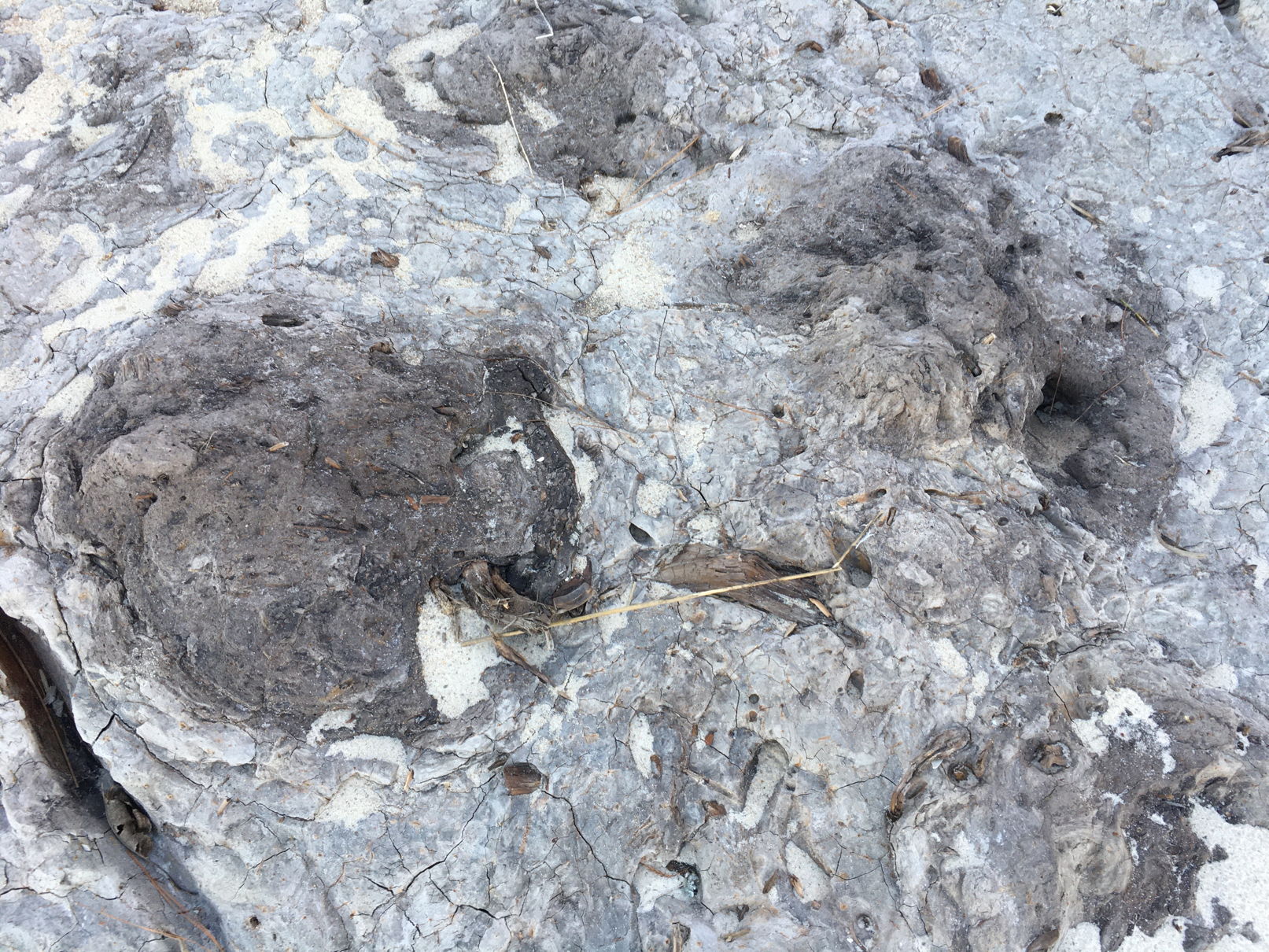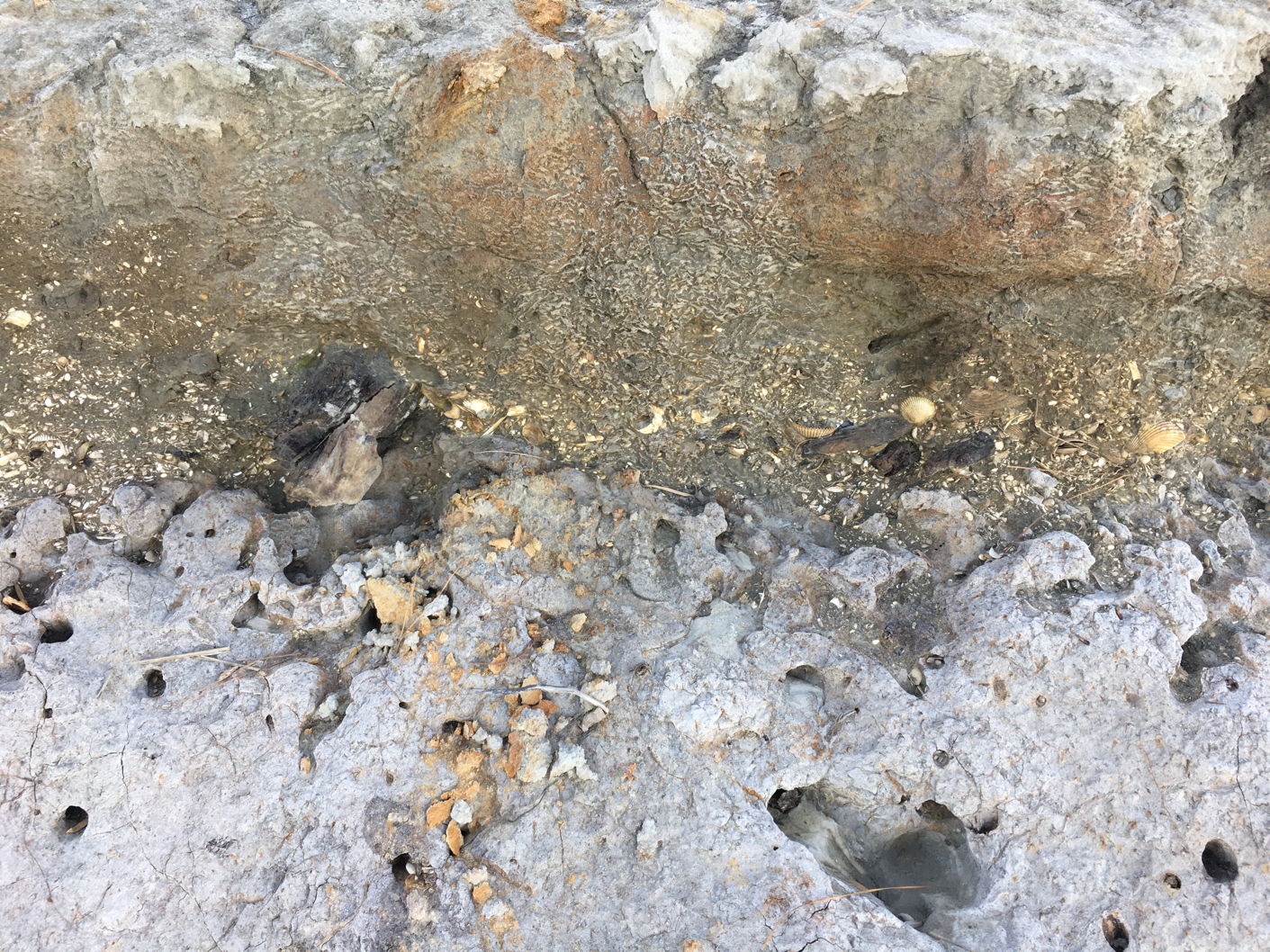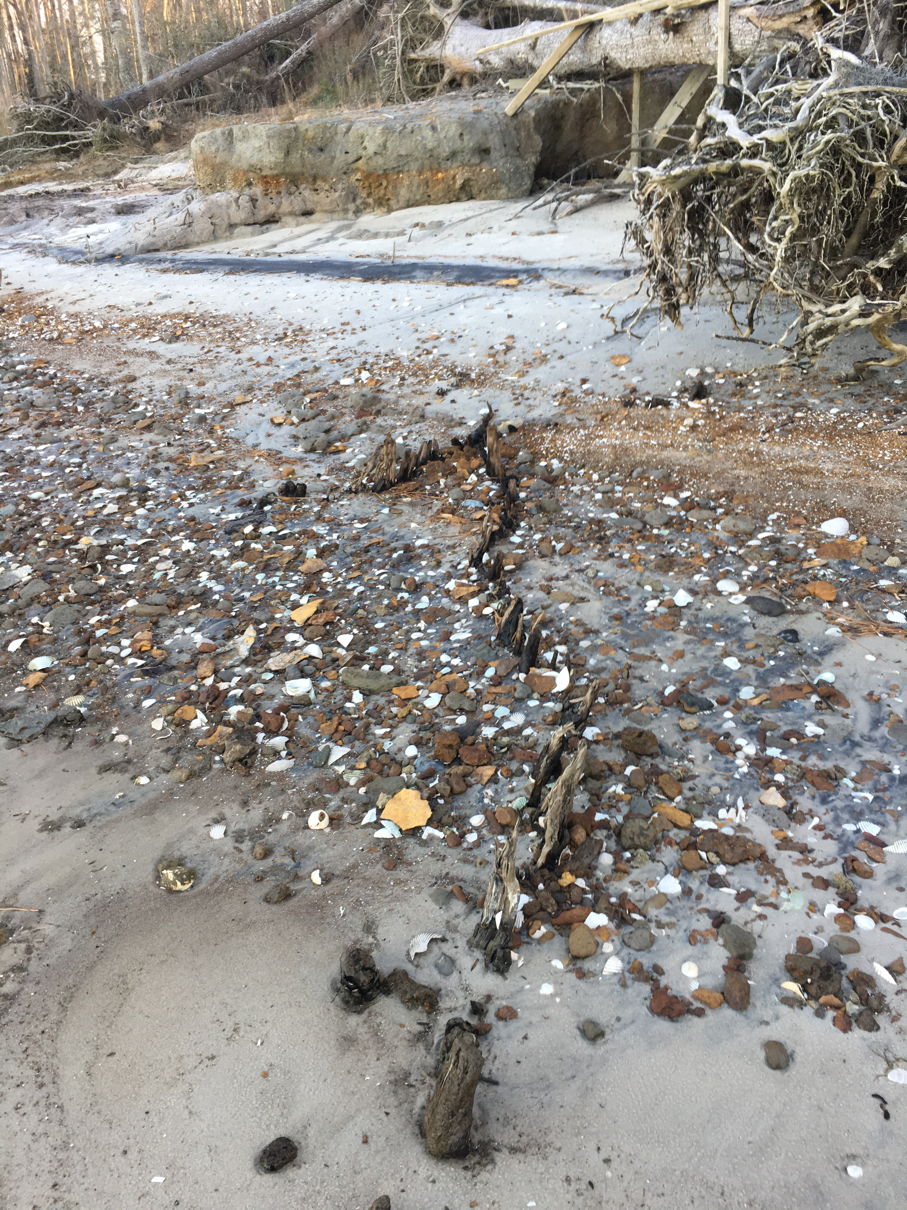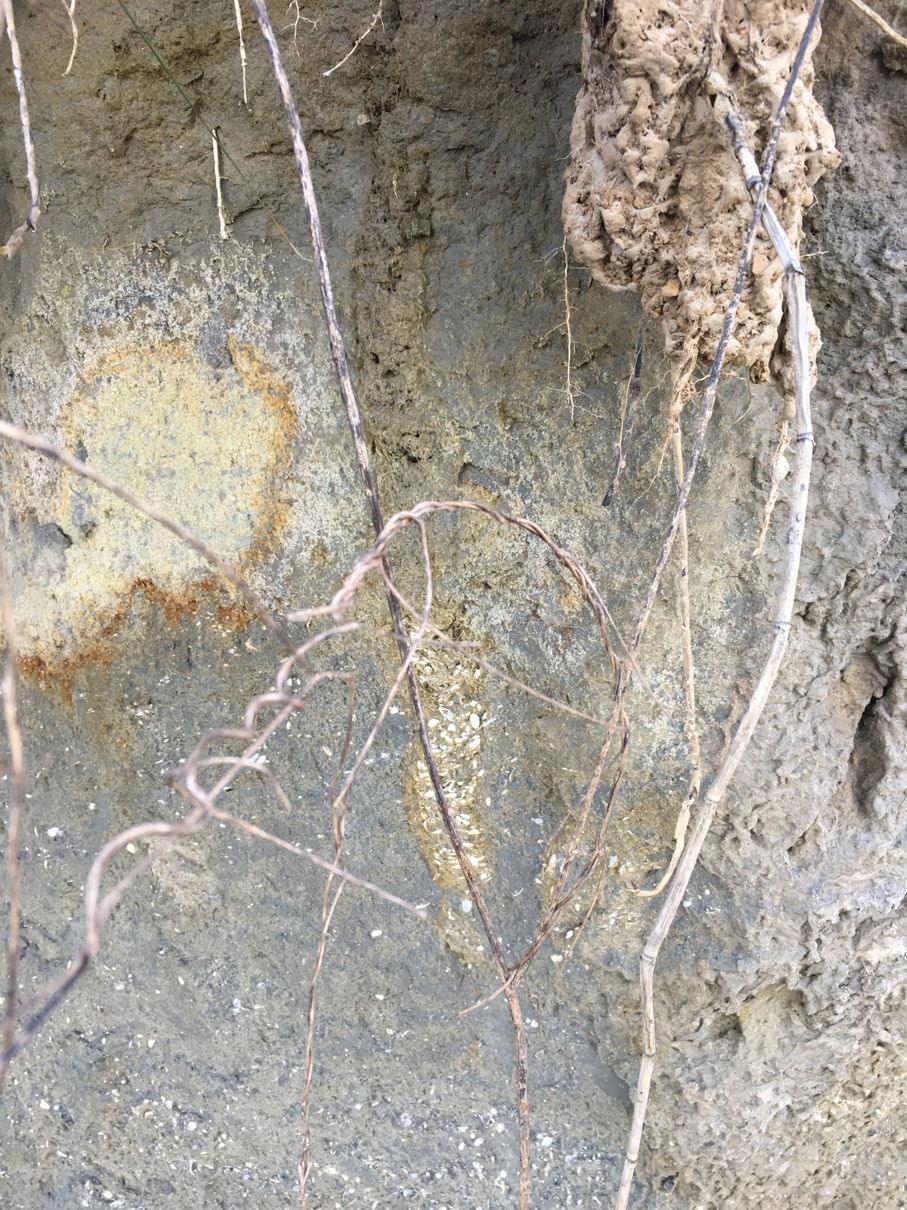
View from directly above a recently exposed area of the swamp paleosol, showing infilled fossil tree trunks (probably bald cypress).
The Flanner Beach formation is a Pleistocene formation that outcrops in eastern North Carolina, mainly along the Neuse River estuary. The formation is known to geoscientists mainly for its depiction of a transgressive sedimentary sequence, and for its rich store of fossils.
At the base of the FB is a swamp paleosol; a dark, organic and clay-rich soil representing a freshwater swamp environment (more on this below). Above the swamp paleosol is a layer representing transition to a brackish environment, rich with fossil shells. This can be subdivided into zones containing fossils representing oligohaline, mesohaline, and polyhaline environments. Further up are stratified open-estuary sedimentary deposits, topped off by beach sands. The formation is about 200,000 years old.
The lowermost, swamp paleosol portion is always visible in bits and pieces but is often partly obscured—its position at the base of eroding shoreline bluffs means it is prone to getting covered up both by modern sands and storm debris from the adjacent estuary, and by slumping and eroding material from the bluffs above. Every now and then, however, high water and waves come along and “clean off” a section for good viewing. That happened not long ago, and I was able to get some pictures.
Note that William M. Miller, who has studied the FB more than anyone else, considers the swamp paleosol to be a separate unit predating the FB. If it is considered part of the underlying James City formation, that would make it 700,000 to 1 million years old.

Shelly layer lies atop the swamp paleosol. The latter is lighter colored than normal due to its drying out after recent exposure.

Fossil tree roots in gray clay.

>200 ka old bald cypress (Taxodium distichum) roots. These are in situ in the swamp paleosol, covered by a veneer of modern beach sand.

Linear feature at center is a krotovina (infilled animal burrow). Note the shelly material at the base. To the left is (probably) a root halo from a long-decomposed tree root.
Some of the key geological publications on the Flanner Beach formation are listed here, along with location information for outcrops.
Questions or comments: jdp@uky.edu
Posted 24 January 2021
